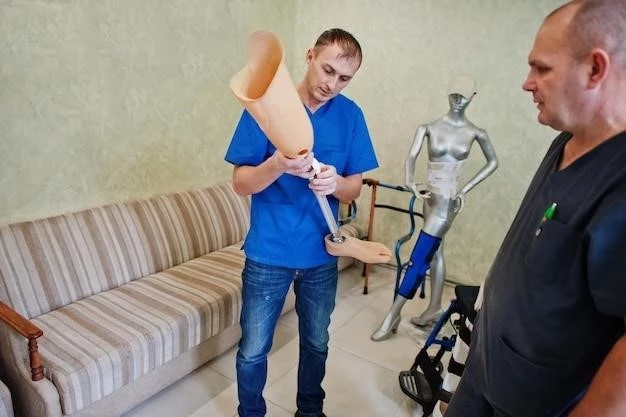Introduction to Orthostatic Intolerance
Chronic orthostatic intolerance is a disorder that primarily affects young women and manifests through various symptoms such as lightheadedness and palpitations.
Definition and Symptoms
Orthostatic intolerance (OI) is characterized by symptoms like lightheadedness, palpitations, vision issues, dizziness, and fatigue when standing upright. Diagnosis and management require an understanding of underlying pathophysiologies.
Types of Orthostatic Intolerance
Orthostatic intolerance presents in different forms like Chronic Orthostatic Intolerance (COI), Postural Orthostatic Tachycardia Syndrome (POTS), and Orthostatic Hypotension (OH).
Postural Orthostatic Tachycardia Syndrome (POTS)
Postural Orthostatic Tachycardia Syndrome (POTS) is a condition characterized by rapid heartbeat upon standing, resulting in symptoms like lightheadedness, palpitations, and fatigue.
Orthostatic Hypotension (OH)
Orthostatic Hypotension (OH) is a condition characterized by a significant drop in blood pressure upon standing, leading to symptoms like dizziness, light-headedness, and an increased risk of falls and other complications.
Causes of Orthostatic Intolerance
Orthostatic intolerance can be triggered by various factors like dehydration, nervous system disorders, heart problems, endocrine issues, or sudden posture changes.
Autonomic Dysfunction
Autonomic Dysfunction is a root cause of orthostatic intolerance, disrupting the body’s natural blood flow and heart rate regulation mechanisms, leading to symptoms like dizziness, fainting, and various cardiovascular issues.
Risk Factors for Developing Orthostatic Intolerance
Risk factors for orthostatic intolerance may include dehydration, heart issues, endocrine disorders, nervous system dysfunction, age, and sudden posture changes.
Age and Gender
Orthostatic intolerance is commonly observed in young women, with a female-to-male ratio of 4⁚1. Age can also be a risk factor for developing orthostatic intolerance, particularly in older individuals.

Diagnosis of Orthostatic Intolerance
Diagnosing orthostatic intolerance often involves evaluating symptoms like dizziness, lightheadedness, palpitations, and fainting, along with conducting specialized tests such as tilt table testing.
Tilt Table Testing
When diagnosing orthostatic intolerance, tilt table testing can be a valuable tool to assess autonomic function and detect abnormalities in heart rate and blood pressure regulation upon changing positions.
Treatment Options for Orthostatic Intolerance
Managing orthostatic intolerance may involve lifestyle changes like standing up slowly, maintaining hydration, and engaging in regular physical activity. In some cases, medications may be prescribed to help regulate blood pressure and improve symptoms.
Lifestyle Modifications
Implementing lifestyle modifications like staying hydrated, increasing salt intake, wearing compression garments, maintaining a balanced diet, and engaging in regular physical activity can help manage symptoms of orthostatic intolerance effectively. Additionally, avoiding sudden posture changes and incorporating relaxation techniques into daily routines can contribute to symptom improvement and overall well-being;
Medications
Medications can play a crucial role in managing orthostatic intolerance. Specifically, medications like fludrocortisone, midodrine, pyridostigmine, and beta-blockers may be prescribed to help regulate blood pressure and heart rate, improve blood flow, and alleviate symptoms such as dizziness and lightheadedness associated with orthostatic intolerance.
Management of Orthostatic Intolerance in Specific Populations
Managing orthostatic intolerance in specific populations like adolescents and astronauts requires tailored strategies to address their unique needs and challenges.
Adolescents
Orthostatic intolerance can significantly impact adolescents, leading to symptoms like dizziness, light-headedness, and fainting, which may affect daily activities. Identifying and addressing orthostatic intolerance early can help adolescents manage their symptoms effectively and improve their quality of life.
Astronauts
When astronauts experience postflight orthostatic intolerance, it is essential to address changes in volume status and autonomic nervous system adaptation that occur due to gravitational differences experienced in space. Implementing non-pharmacological and pharmacological countermeasures can help mitigate the risks associated with this condition and ensure a safe return to Earth.
Complications Associated with Orthostatic Intolerance
Orthostatic intolerance can lead to complications such as an increased risk of falls, cardiovascular diseases, cognitive impairment, exercise intolerance, and syncope, impacting daily activities and quality of life. Proper management and treatment are crucial to prevent these complications.
Fall Risks
Orthostatic intolerance can increase the risk of falls due to symptoms like dizziness, fainting, and lightheadedness, particularly when transitioning from lying or sitting to a standing position. Implementing measures to manage blood pressure and prevent sudden drops can help reduce the risk of falls associated with orthostatic intolerance.

Research and Developments in Orthostatic Intolerance
Research on orthostatic intolerance continues to evolve, with a deeper understanding of the underlying pathophysiologies and clinical variants. Stay updated on the latest advancements and discoveries in the field to enhance diagnosis and treatment approaches.
Understanding Underlying Pathophysiologies
Research aims to further understand the diverse underlying pathophysiologies of orthostatic intolerance, including variations in blood flow, heart rate, and blood pressure regulation that impact individuals in different positions. By delving deeper into these mechanisms, advancements in diagnosis and targeted treatments can be achieved to improve the management of orthostatic intolerance and enhance the overall well-being of individuals affected by this condition.
Lifestyle Recommendations for Individuals with Orthostatic Intolerance
For managing orthostatic intolerance, individuals are advised to stay hydrated, increase salt intake, wear compression garments, maintain a balanced diet, and engage in regular physical activity. Additionally, avoiding sudden changes in posture and incorporating relaxation techniques into daily routines can help alleviate symptoms and improve overall well-being.
Hydration and Diet
Proper hydration and a balanced diet play essential roles in managing orthostatic intolerance. Adequate fluid intake and ensuring the consumption of electrolytes can help stabilize blood pressure and improve symptoms associated with orthostatic intolerance. Additionally, maintaining a diet rich in nutrients and minerals can contribute to better overall health and well-being for individuals with orthostatic intolerance.
Support Resources for Individuals with Orthostatic Intolerance
For individuals with orthostatic intolerance, seeking support from foundations dedicated to autonomic disorders like the NDRF Foundation can provide valuable assistance, resources, and community connections to help manage and navigate the challenges of living with orthostatic intolerance.
NDRF Foundation Assistance
The NDRF Foundation offers support and resources for individuals with orthostatic intolerance, providing valuable assistance, guidance, and community connections to help manage the challenges associated with this condition and improve overall well-being.
Conclusion
Orthostatic intolerance presents complex challenges, impacting individuals’ daily lives with symptoms such as dizziness, lightheadedness, and fatigue. It is crucial to stay informed about the evolving understanding of the underlying pathophysiologies and diverse clinical variants associated with this condition. By integrating lifestyle modifications, proper hydration, balanced nutrition, and tailored treatment options, individuals with orthostatic intolerance can effectively manage their symptoms and improve their quality of life. Seeking support from organizations like the NDRF Foundation can provide valuable resources and community connections to navigate the complexities of living with orthostatic intolerance. With ongoing research advancements and personalized care, individuals can enhance their well-being and effectively address the challenges posed by orthostatic intolerance.
